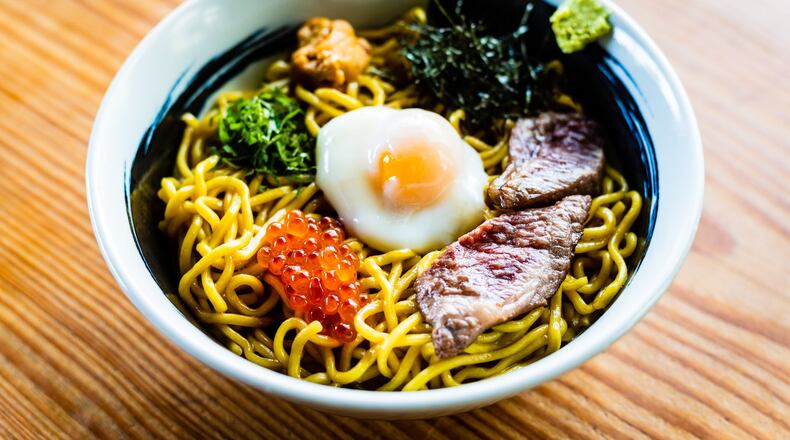Ramen is more than the cheap instant packets of dorm life. It has evolved over hundreds of years to become a signature dish of Japan, after first being introduced to the nation by Chinese immigrants. After World War II, the springy, wheat-based noodles swept Japan, with regional styles emerging, and it became the staple it is today.
Styles vary, based on preparation and region, but there are four main components to a bowl of ramen: tare, dashi, noodles and toppings.
Tare is the strong, salty seasoning essence placed in the bottom of the bowl.
Dashi is the broth that forms the base, usually extracted from pork or chicken bones, or dried seafood. A soup containing more than one type of dashi is common. Soup is the backbone of ramen, and typically is categorized into four types: shoyu, shio, miso or tonkotsu.
If you walked into a ramen ya shop in Japan and simply ordered “ramen,” shoyu would be served. Based on a reduction of soy sauce, shoyu ramen is transparent brown in color, with innumerable variations in style and taste.
Shio, which means “salt” in Japanese, is a mild-tasting, light-colored broth built on a reduction of dried seafood and/or seaweed.
Miso, made from fermented bean paste, is light, tangy and flavor-packed.
Tonkotsu is the only soup with a name derived from the broth rather than the tare. Pork bones cooked for days over high heat are what give tonkotsu its cloudy appearance and collagen-rich texture.
Added to the soup are snappy noodles made from wheat flour, salt and an alkaline solution known as kansui that adds texture, color and flavor.
Toppings vary by region, but common add-ins are half-boiled or flavored egg, chashu (roast pork), nori (dried seaweed), menma (bamboo shoots) and naruto (cured fish paste with a decorative pink swirl).
About the Author
